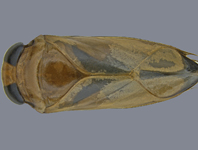Abstract
Invasive species threaten the ecological and economic wellbeing of a country (Pimentel et al. 2001). In the last decade, several mealybugs and soft scale insects have been accidentally introduced to India, of which some have become serious pests (e.g., Phenacoccus solenopsis Tinsley, Paracoccus marginatus Williams & Granara de Willink, Phenacoccus madeirensis Green and Pseudococcus jackbeardsleyi Gimpel & Miller); others are widening their host ranges and spreading rapidly. Kilifia acuminata (Signoret) and Protopulvinaria longivalvata Green seem relatively harmless but Trijuba oculata (Brain) and Pulvinaria urbicola Cockerell cause economic damage (Joshi & Rameshkumar 2013; Joshi 2017).
References
Bellotti, A.C., Smith, L. & Lapointe, S.L. (1999) Recent advances in cassava pest management. Annual Review of Entomology, 44, 343–370.
https://doi.org/10.1146/annurev.ento.44.1.343
Sartiami, D., Watson, G.W., Mohamad Roff, M.N., Hanifah, Y.M. & Idris, A.B. (2015) First record of cassava mealybug, Phenacoccus manihoti (Hemiptera: Pseudococcidae), in Malaysia. Zootaxa, 3957 (2), 235–238.
https://doi.org/10.11646/zootaxa.3957.2.8
FAO (2014) Introduction of parasitoid wasps for control of pink cassava mealybugs in Lao PDR. United Nations Food and Agriculture Organization Asian Regional IPM/Pesticide Risk Reduction Programme.
Herren, H.R. & Neuenschwander, P. (1991) Biological control of cassava pests in Africa. Annual Review of Entomology, 36, 257–283.
https://doi.org/10.1146/annurev.en.36.010191.001353
Joshi, S. & Rameshkumar, A. (2017) Silent foray of three soft scale insects in India. Current Science, 112 (3), 629–635.
https://doi.org/10.18520/cs/v112/i03/629-635
Joshi, S. (2017) First record of Pulvinaria urbicola Cockerell (Hemiptera: Coccidae) from India, with a key to the Indian species of Pulvinaria Targioni Tozzetti. Zootaxa, 4236 (3), 533–542.
https://doi.org/10.11646/zootaxa.4236.3.7
Matile-Ferrero, D. (1977) Une cochenille nouvelle nuisible au manioc en Afrique equatoriale, Phenanococcus manihoti n. sp. (Homoptera, Coccoidea, Pseudococcidae). Annales de la Société Entomologique de France, New Series, 13 (1), 145–132.
Muniappan, R., Shepard, B.M., Watson, G.W., Carner, G.R., Rauf, A., Sartiami, D., Hidayat, P., Afun, J.V.K., Goergen, G. & Ziaur Rahman, A.K.M. (2011) New records of invasive insects (Hemiptera: Sternorrhyncha) in Southeast Asia and West Africa. Journal of Agricultural and Urban Entomology, 26 (4), 167–174.
https://doi.org/10.3954/1523-5475-26.4.167
Parsa, S., Kondo, T. & Winotai, A. (2012) The cassava mealybug (Phenacoccus manihoti) in Asia: first records, potential distribution, and identification key. PLoS ONE, 7 (10), 1–11.
https://doi.org/10.1371/journal.pone.0047675
Pimentel, D., McNair, S., Janecka, J., Wightman, J., Simmonds, C., O’Connell, C., Wong, E., Russel, L., Zern, J., Aquino, T. & Tsomondo, T. (2001) Economic and environmental threats of alien plant, animal, and microbe invasions. Agriculture, Ecosystems and Environment, 84, 1–20.
https://doi.org/10.1016/S0167-8809(00)00178-X
Santis, L. de (1963) Encirtidos de la Republica Argentina (Hymenoptera: Chalcidoidea). Anales de la Comisión de Investigación Científicas, Provincia de Buenos Aires, La Plata, 4, 9–422.
Watson, G.W. & Chandler, L.R. (2000) Identification of Mealybugs Important in the Caribbean Region. 2nd Edition. CABI Bioscience, Egham, 40 pp.
Williams, D.J. & Granara de Willink, M.C. (1992) Mealybugs of Central and South America. CAB International, Wallingford, 635 pp.
Winotai, A., Goergen, G., Tamò, M. & Neuenschwander, P. (2010) Cassava mealybug has reached Asia. Biocontrol News and Information, 31, 10–11.


